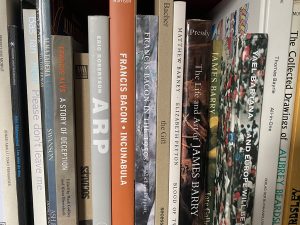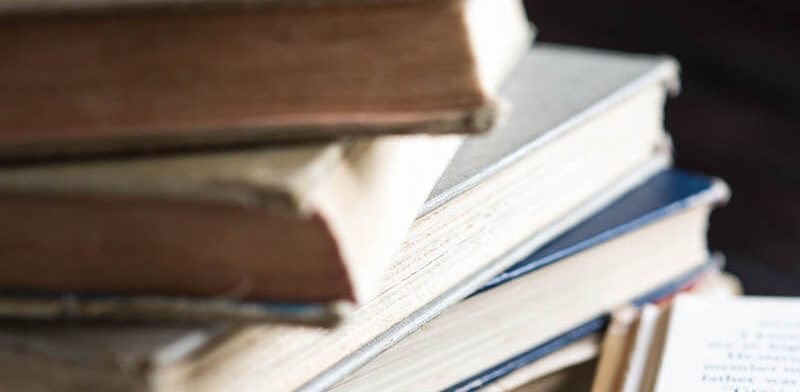The forgotten pleasures of viewing art in reproduction
In the introduction to his 1996 essay collection, About Modern Art,the art critic David Sylvester recalls that his damascene conversion to art came via a black-and-white reproduction of Matisse’s Dance (1910). When I read that, in my mid-twenties, I didn’t find it as weird as I might now. You got into art through photos? Fine, so did I. (Just not during the 1930s.) I grew up with one art gallery nearby, in Leeds, and while I grew to love some of the works in their collection, the stuff that first imprinted itself on me when I saw it was all on the page. Obviously, I’m thinking about this now because the days of art being inaccessible in the flesh have, for most of us, recently returned, however briefly, however lengthily. We scorn the reproduction when there’s a choice: when you live in a city full of open galleries and capacious museums, why flip pages or click through websites? When you don’t, though, you make do with what you have.
There are upsides to such enforced distance. As a teenager I used to buy cheap bootleg cassettes of bands I liked, which were usually haloed in hiss and distortion, and having to strain to hear or see something through the murky artefacts of repro, to push back against a degree of unavailability, is a masochistic pleasure mostly vanished in a high-def era, similar to waiting for a television show to be broadcast. Maybe you also imagined that were you ever to glimpse the legit version, whether a Matisse painting or a well-mastered release of Mothers of Invention outtakes and jams from 1970, it’d be impossibly thrilling. But for now, you can’t have it and the result is distance as desire mechanism, a longing for something else that is, at the same time, an experience in itself. Don’t ask Walter Benjamin, ask Proust; ask anyone who has loved and not been loved back.
Sometime during the first half of the 1990s I saw my first roomful of de Koonings, at what was then The Tate. I can’t remember which ones. I do remember that one or two of them were in the cerulean-blue, heavily illustrated monograph of the Ab-Ex master that I’d taken on my foundation course and progressively splattered with paint, especially the page with Pink Angels (c. 1945). I’d gotten into de Kooning in the first place through another art book with a lot of pictures in it, Edward Lucie-Smith’s Lives of the Great Modern Artists (1986). As a schoolboy I’d stare the print off that thing, with its images and in-the-studio portraits, projecting, far from its times and places. I don’t paint anymore – a distant cheer goes up – and I mostly don’t read hagiography like that anymore; the propelling naivety is gone, or at least it’s buried. Again, though, something gained and something lost. An array of real de Koonings is simply a different, more vivid, more numinous order of experience than a photo where the colours are a bit off. (Except you won’t know that until you’ve been there in the gallery.) Yes, it’s better. But when a photo is all you’ve got, it counts. And so I’m looking at reproductions again, much more now and closer, because they’re all there’s been lately, and trying to recalibrate. There’s something pleasurable about it, this disinterring of an old way.
Artists, as usual, are ahead of us in this respect. Even if there is no sight like an artist in meltdown because the colours aren’t quite perfect in their new catalogue, the ones I know mostly have art books in their studios; the painters in particular look at photos of paintings as an alternation from and spur, or goad, to painting, and they’re not that fussy. They have the old Phaidon books with detachable plates in them sometimes. While the critical community, if it exists, considers the reproduction a necessary evil and illustrative support – heaven forbid you’d ever review a show from a set of jpegs the gallery sent through – artists don’t snob, don’t spurn. They pin up postcards from the museum gift shop; they live with whatever emits a vibe. This stuff can be like a good-luck charm, too, or a shorthand for whatever compound the artist wants to get into their work: I remember being in Rebecca Warren’s studio and her having there, if I recall correctly, a diagram of a black square that represented blocked ideation, a plastic figurine of Freud and a photo of a cat; all of this was important to her, generated moods.

In the meantime, I’m out here with an inbox full of invites to virtual viewing rooms, and I don’t want to be. The so-called 3D walkthrough, the gimmickry that allows you to take a work from the gallery’s inventory and, via digital compositing, see it placed in your own home, etc – these are inventive and laudable ways to bridge the gap created by lockdown, to keep viewers and buyers onstream. But, to be a churl about it, they remind me of being at the gym, on one of those running machines that offers filmed footage of a landscape through which to jog or sprint. Every once in a while, if you squint and block out the music and the sound of other machines and grunting, you might fool yourself into thinking you’re actually out in the fresh air, the real. But only momentarily, and then there’s a sort of ambient disappointment in remembering that no, you’re thundering away on a treadmill. It’s like wandering down the street on Google Earth because you can’t go out.
And so not to criticise anyone who enjoys panning and swooping around a virtual gallery (and social media initiatives such as #MuseumsUnlocked, in which people post pictures taken in the institutions they currently can’t enter, are clearly making some people happy), these are proposals edged with melancholy. Which is maybe why, for all that it’s somehow a privileged move, I keep turning the computer off – dodging the flood of content that galleries are pumping out – and picking up a book of reproductions, or leaving the computer on and only looking at one or two images from a museum’s archive. This different pace, this definitely-not-real, is pacifying, a balm. Meanwhile, as I write, it’s just been announced that Berlin, where I live, is reopening its galleries. For the moment, I might just stay in.
